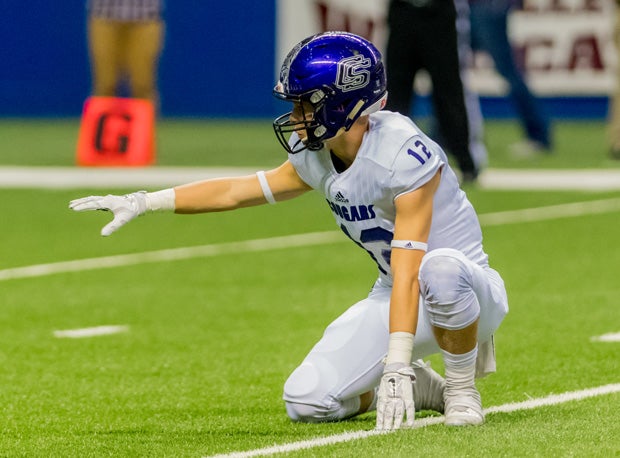Video: State record field goal
Check out one of the most significant kicks of the season.One of the most important things a coach can do at the end of their season is evaluate the performance of their team, both on and off the field. This process of self evaluation, coach evaluation and program evaluation has always been one of my favorite parts of the year. I just wrapped up my 13th season as a varsity special teams coordinator; analyzing each of our teams via statistical analysis is something I look forward to each season.
There are five key areas that I evaluate each year regarding our special teams' effectiveness: Average start after kickoffs, average kick return yards per attempt, average punt return yards per return, net punting yards and kick scoring percentages.
Average start after kickoffsTo figure this out, record each starting yard line after your kick return, and your opponent's kick return. Add those up, and divide by the number of kicks. For instance, if you start on the 20, 28, 32, 41, then your average start is the 30.25 yard line. If your opponent starts on the 12, 28, 18 and 20, their average start is the 19.5. That is a tremendous difference of +10.75 yards. If there are eight kicks in the game, you've now earned about 86 yards more than your opponent. You want your average start after kickoffs to be better than our opponent's average start after kickoffs. If you consistently put your team in a better starting position than your opponent, then your odds of winning increase.
Average kick return yards per attemptTo figure this out, record where your player catches the ball, and then where he ends up after the return. So, if your kick returner catches the ball on the 4 and returns it out to the 24, then he had a 20 yard return. Do this for each of the kick returns. Do the same for the opponent. You want for your kick return average to be higher than your opponent. If you average 12 yards per return, and your opponent averages 22 yards per return, you need to evaluate why your opponent is getting an entire first down more than you on every single kick. Is it a deficiency in your return game? Or kickoff coverage unit? Or both?
Average punt return yards per attemptYou figure this out the same exact way that you figure out kick return yardage. Where is your punt returner when he catches it? How many yards does he return it? If he catches the ball on the 10, and returns it to the 40, then he has returned the ball 30 yards on that return. If the next time he returns it only 2 yards, then you add 30 and 2, then divide by how many punts there were, in this sample, just 2. So, your punt return average is 16. It is key to have a better punt return average than your opponent.
Net punting yardsIt is very important that your team's net punt average is better than your opponent. The net punt average is how many yards the punt went minus the return yards. So, if you kick it 30 yards, they return 10 yards, then the net punt is 20 yards. For instance, this year our net punt average was 33.3. Our opponents' net punt average was 25.9 yards. So, we earned 7.4 yards of field position with every single punt. That's a great thing because it helps to change the field.
Kick scoring percentages
Check the numbers on how successful your field goal team was.
Photo by Lester Rosebrock
If you attempted 42 extra points this year, and missed just two of them, than your extra point percentage is 95 percent. You simply divide the number of successful kicks by the amount of kicks. Use this same process for figuring out your field goal percentage. What is important in evaluating your kick scoring percentage is determining why you missed the ones you missed. Were they blocked? If so, where did the block come from? If your kicker missed field goals, what were the lengths that were missed? Did a certain hash give your team more of a problem?
Breaking down your special teams using pure numbers, a pure statistical analysis, will help your team to improve its play next year.
Chris Fore is a veteran Head Football Coach and Athletic Director from Southern California. He consults coaches and programs nationwide through his business Eight Laces Consulting.
